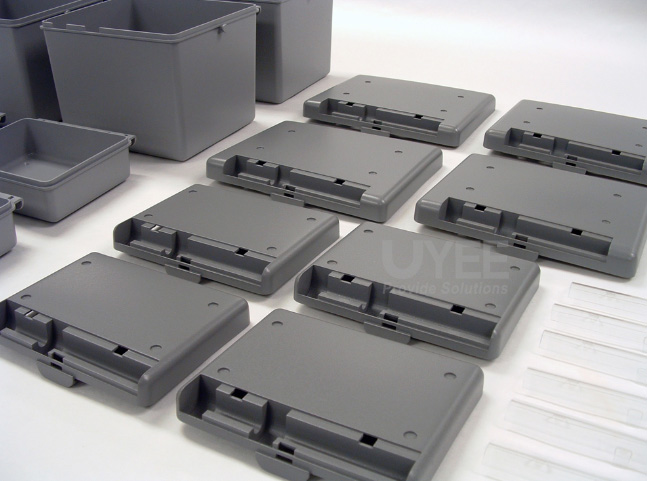There are many procedures involved in producing a component or product before being released to the customer base. The rapid prototyping development phase is one example of such a step. While it may seem a linear process, it must complete many of these steps several times before the part/product may proceed to the next level.
What exactly is prototype development?
Let’s define the word by breaking it down. Unfinished components are prototyped to demonstrate product qualities and explore all options before investing in full-scale production. In this way, prototype development is a collection of processes utilized by the producer. Many people confuse prototype development with prototype production.
Prototype Development Categories
Prototypes are classified into four kinds depending on the product’s design and how the makers anticipate the final product will operate. Among the categories are:
-
Working Prototype
In this process, the developer creates a prototype that is functional and includes nearly all the final product’s features.
-
Functional Prototyping
The development procedures of a functional prototype and a functioning prototype are comparable. On the other hand, product developers often create functional prototypes of different sizes and methodologies.
-
Visual Prototyping
The product developers create a visual prototype to present the product idea’s forms, dimensions, and layout. Because this procedure does not require demonstrating whether or not the product works, it is simpler to create than other prototypes.
-
Prototype of User Experience
The product developers created a user experience prototype with enough information to aid future research and product development.

The Importance of Working Prototyping
The prototype development stage is a crucial step in the manufacturing process for all parts. Here are some of the reasons why component makers should not ignore the prototype development stage:
-
Presenting the Product
It’s useless to develop a component or product that customers or stakeholders won’t support. We know that selling a product with a prototype has a higher chance of persuading a client/stakeholder than selling one without. Their input is also critical in making significant design modifications to the final product.
-
Putting the theory to the test
Creating a design for a component does not ensure that it will perform its intended functions in real-world circumstances. Designing a prototype is an excellent way to assess how the component will function in its working environment. This test will assist the maker in determining which elements of the design should be revised or discarded.
-
Lower the manufacturing cost
It may seem incorrect since the prototype will use part of the money intended for commercial manufacturing. However, the amount spent on prototype manufacturing will be minimal compared to the amount wasted by stakeholders if the trial and error approach is employed. It is because the prototype will aid in determining all of the changes that the manufacturer will need to make to the product. As a result, a more precise estimate of the manufacturing cost may be established.
Difference between a Prototype and a Final Product
The resulting product may look different, have different content, or be produced using a different machining technique.
For example, the materials used to create the final product are often costly, while the prototype raw material is composed of something inexpensive. However, its characteristics are typically the same as those of the finished product. This variation in source material may affect the finished product’s look and finish.
Furthermore, the amount of the final product and prototypes produced is constantly variable. Working prototypes are often produced in small quantities since they are only required for the prototype manufacturing process. However, for a variety of reasons, they produce the final goods in huge quantities. One may complicate the production process.
What are the advantages of having functioning prototypes?
Working prototypes provide many advantages for you. Prototypes may help with anything from fundamental design to end-user satisfaction. Working prototypes provide many advantages, including:
- Early detection of design flaws
- Determine production equipment
- Test for fit and durability
- Gather client and end-user feedback/identify improvements
- Determine ultimate function and design
- Assist in getting financing and investors
The first advantage of functioning prototypes is that they help to identify design flaws and other production difficulties. Early identification may help to prevent problems later in the manufacturing process, lowering waste and reproduction costs.
Working prototypes are useful for estimating material needs and prices. Prototypes also help determine production time and workforce needs. These components assist you in obtaining financing, developing budgets, and determining the ultimate cost of the product.
Can the product be made using existing machinery? Is it necessary to alter the product? Creating working prototypes allows you to evaluate if any changes to existing equipment, or the purchase of new machinery, are required for production.
When constructing assembly components, building a prototype allows you to evaluate whether the parts fit correctly. It saves money in terms of rework time and material waste.
Working prototypes also provide the opportunity to get input from clients, distributors, and consumers. This kind of feedback helps in determining the ultimate function and design of the product. Customer research and feedback aids in the creation of customer happiness and gives you confidence in the product’s marketability.
Conclusion
Any prototype manufacturing development is a portion of the process that requires preparation and thought. While you may do it yourself, you can also seek the assistance of professional Prototype companies, which makes the job simpler and saves time.
